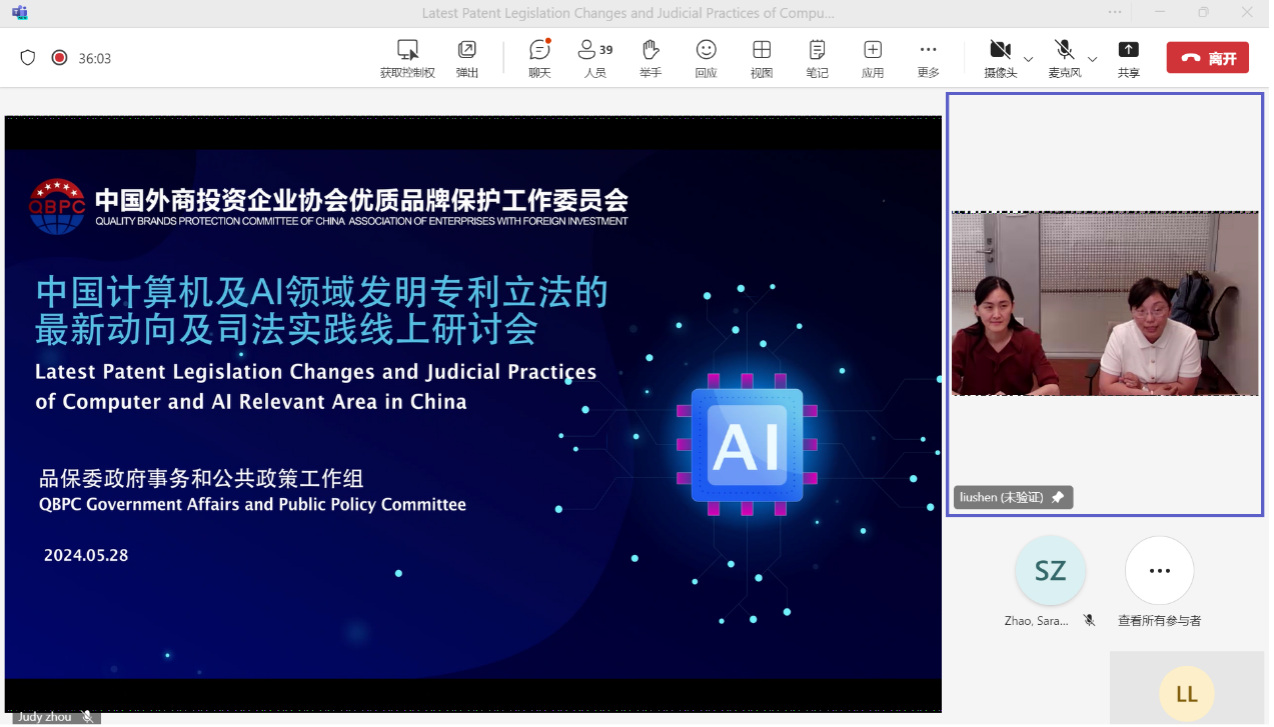On May 28, the Quality Brands Protection Committee of China Association of Enterprises with Foreign Investment (QBPC) Government Affairs and Public Policy Committee (GAPPC) held an online seminar on the Latest Legislation Trend and Judicial Practices of Invention Patent Related to Computer and AI Relevant in China, inviting Lawyer YANG Qian to interpret the impact of the amendments to the Patent Law Implementation Regulations and the Examination Guidelines on practice, particularly the impact on the practices due to the computer program-related changes in examination rules for patent applications, the patent application process and dispute resolution rules. The meeting was moderated by GAPPC Vice Chair ZHANG Yan, and more than 40 QBPC members participated online.

YANG first outlined the trend of examination rules for patent applications relating to computer programs, focusing on the qualification of AI inventors and the determination of patent-granting objects. Chapter 9, Part II of the New Patent Examination Guidelines specificly establishes examination standards for computer program applications. Despite of the seemingly dramatic amendment, the overall orientation is actually in line with current mainstream practices. Therefore, the amendment will not bring about a significant effect on the practice of patent applications relating to computer programs; on the contrary, it will provide more certainty for the examination of the granting objects and creativity.
Then, YANG analyzed the changes that have a big impact on patent applications in terms of application procedure and examination rules. About the application procedure, she emphasized the changes in the priority system while explaining the changes in the process details, such as delayed examination, consolidated examination, adjustment of re-examination procedures, and compensation for deadlines. In terms of examination rules, she shared the changes and their impact on the scope of non-granting of patent rights, requirements for drafting patent application documents, network evidence, novelty grace period, and creative logic.
Finally, YANG discussed legislative developments that affect patent dispute resolution cases, such as patent invalidation procedures, patent right evaluation reports, patent administrative protection systems, and service inventions. After the new examination guidelines came into effect, the flexibility and uncertainty of the patent invalidation procedure have increased significantly, requiring more professionalism from relevant parties. Regarding the patent evaluation report system, she believed that after allowing the alleged infringer to file a request for a patent evaluation report, the patent evaluation report system could play a larger role, especially providing an efficient new solution for resolving small and micro patent disputes. In terms of administrative protection for patents and service inventions, the new legal logic was more complete and formed a closed loop, providing clearer direction for practice.
In the Q&A session, YANG answered questions including the disparities between China and the United States, Europe in patent applications, the integrity of domestic enterprises in the patent applications, and so on.
